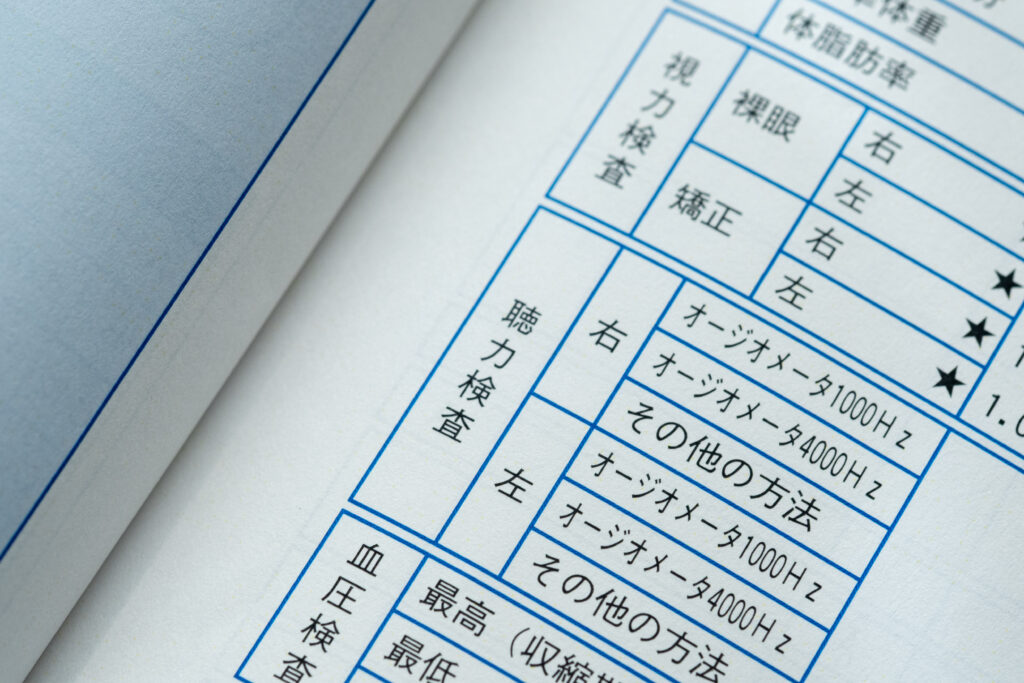What Sound Insulation Performance Is Required for Hearing Test Rooms? ─ Explanation Based on JIS, ISO, and Ministry of Health Guidelines ─

Introduction | Why Silence Is Critical for Accurate Hearing Tests
Hearing tests measure the minimum audible sound levels a person can detect. To ensure accurate results, the testing environment must be exceptionally quiet and free from external noise interference. For this reason, hearing test rooms must feature high-performance sound insulation.
In this article, we explain the requirements for hearing test environments based on the relevant JIS (Japanese Industrial Standards), ISO standards, and guidelines issued by Japan’s Ministry of Health, Labour and Welfare.
1. Regulatory and Standard-Based Requirements for Hearing Test Rooms
● Ministry of Health Guidelines|Health Examination Manual
According to Japan’s national Health Examination Manual under the Industrial Safety and Health Act:
“Testing should be performed in a quiet environment. Care must be taken to ensure that ambient noise does not interfere with testing.”
Although the guideline does not specify dB values, ISO standards are widely adopted in practice as the reference.
● JIS Z 8732:2000|Japanese Industrial Standard
This standard is based on ISO 3745:2000 and defines the requirements for using anechoic and hemi-anechoic chambers in sound power level measurements.
-
Rooms where the inverse square law is satisfied are defined as “anechoic chambers.”
-
Permissible deviation levels are specified by frequency band (e.g., ±1.0 dB for 800–5,000 Hz).
● ISO 3745:2012 / ISO 3744:2010|Latest International Standards
| Standard | Purpose | Applicable Conditions |
|---|---|---|
| ISO 3745:2012 | Precision measurements | K2 ≤ 0.5 dB (free field) |
| ISO 3744:2010 | Engineering methods | K2 ≤ 4.0 dB (semi-free field) |
The K2 environmental correction factor quantifies the influence of reflections. Lower K2 values indicate better sound field conditions, closer to an ideal free field.
2. Evaluating Acoustic Performance: Inverse Square Law and the K2 Factor
Anechoic and semi-anechoic chambers are evaluated based on the inverse square law, which states that the sound pressure level decreases by 6 dB every time the distance from the sound source doubles.
If this law is observed within the test environment, the space is considered acoustically suitable, and K2 values falling within standard limits validate the chamber’s performance.
3. Material Selection for Acoustic Environments|Utilizing the BF Series by Sonora Technology
To achieve the required sound insulation performance, it is not enough to use thick walls alone; the use of high-performance sound-absorbing materials is essential.
Among the most effective materials available is the BF Series of absorbers developed by Sonora Technology Co., Ltd., offering the following advantages:
-
Vertical incidence sound absorption coefficient ≥ 0.99
-
Fire-resistant and low-dust materials, ideal for medical use
-
Designed to support inverse square law-based acoustic environments
-
Broadband absorption characteristics suitable for full-range sound
These properties make the BF Series an ideal choice for K2 ≤ 2 dB chamber design, widely used in medical and acoustic measurement facilities.
4. Enclosure’s Technical Capabilities and Custom Solutions
Enclosure Co., Ltd. provides high-performance hearing test rooms designed in accordance with ISO and JIS standards, offering:
-
K2-based acoustic field design
-
Optional integration of BF Series by Sonora Technology
-
Ambient noise control below 30 dB(A)
-
Acoustic sealing of ventilation and cable penetrations
We offer various configurations including stand-alone booths, modular units, and integrated facility-type rooms, depending on the client’s needs.
Conclusion|Accurate Testing Begins with Acoustic Design
A hearing test room is not simply a soundproof space; it must provide an acoustically qualified environment that enables reliable diagnostics.
Enclosure Co., Ltd. ensures compliance with standards and real-world performance verification to deliver quiet and reliable hearing test environments for medical professionals and patients alike.
